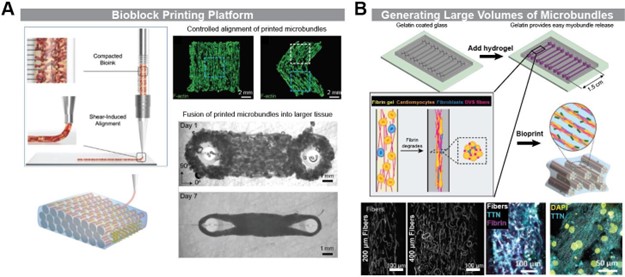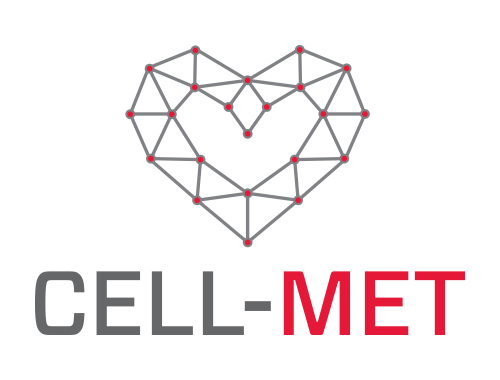Making Strides in Producing Life-saving Cardiac Patches
Outcome/Accomplishment
University researchers are making great strides in developing bioengineered cardiac muscle tissue (also called cardiac microbundles) that looks and acts like real heart tissue, offering exciting new ways to treat and heal heart disease. This work is being conducted as part of a research program dedicated to tackling the top killer worldwide—heart attacks—that is being supported by the National Science Foundation (NSF)-funded Engineering Research Center (ERC) in Cellular Metamaterials (CELL-MET), headquartered at Boston University (BU).
Impact/Benefits
Control of tissue architecture is critical for the function of the heart. CELL-MET'S research focuses on building engineered heart tissues of increasing complexity through advances at the convergence of engineering and biological disciplines. This project reflects substantial progress and builds on prior research efforts to generate large cardiac patches with increased control of the alignment and assembly of cardiac microbundle units developed in previous research efforts. This capability to produce the tissue patches is a big stride forward in reaching CELL-MET's objectives and paves the way for further improvements.
Explanation/Background
This project involves using bioprinting, which employs three-dimensional printing–like techniques, to combine cells, growth factors, and/or biomaterials to fabricate biomedical parts that imitate natural tissue characteristics. The CELL-MET researchers developed a technique to bioprint connective tissues, which is a key piece in the technology needed to create a large-scale cardiac patch. In this technique, cardiac microbundles are generated on a large scale, then harvested and used as a "bioink." The bioink is printed through a nozzle where shear forces induce alignment of the microbundles. Over time, the aligned microbundles fuse, to create a larger tissue that maintains alignment and demonstrates increased function.
Two procedures contributed to this effort: (1) integrating aligned synthetic nanofibers within microbundles and (2) incorporating microbundles into CELL-MET's 3D bioprinting workflow in a new technique the Center calls NanoTemplated Bioblock Printing. Combining these methods, the researchers were able to demonstrate the ability to bioprint microbundles with precise, arranged architectures that persist throughout tissue remodeling and maturation. Functions of these printed tissue patches are now being evaluated and optimized for a range of cardiac functions, such as heartbeat conductivity, contraction force generation, and more.
Location
Boston, MassachusettsStart Year
Biotechnology and Healthcare
Biotechnology and Healthcare
Lead Institution
Core Partners
Fact Sheet
Outcome/Accomplishment
University researchers are making great strides in developing bioengineered cardiac muscle tissue (also called cardiac microbundles) that looks and acts like real heart tissue, offering exciting new ways to treat and heal heart disease. This work is being conducted as part of a research program dedicated to tackling the top killer worldwide—heart attacks—that is being supported by the National Science Foundation (NSF)-funded Engineering Research Center (ERC) in Cellular Metamaterials (CELL-MET), headquartered at Boston University (BU).
Location
Boston, MassachusettsStart Year
Biotechnology and Healthcare
Biotechnology and Healthcare
Lead Institution
Core Partners
Fact Sheet
Impact/benefits
Control of tissue architecture is critical for the function of the heart. CELL-MET'S research focuses on building engineered heart tissues of increasing complexity through advances at the convergence of engineering and biological disciplines. This project reflects substantial progress and builds on prior research efforts to generate large cardiac patches with increased control of the alignment and assembly of cardiac microbundle units developed in previous research efforts. This capability to produce the tissue patches is a big stride forward in reaching CELL-MET's objectives and paves the way for further improvements.
Explanation/Background
This project involves using bioprinting, which employs three-dimensional printing–like techniques, to combine cells, growth factors, and/or biomaterials to fabricate biomedical parts that imitate natural tissue characteristics. The CELL-MET researchers developed a technique to bioprint connective tissues, which is a key piece in the technology needed to create a large-scale cardiac patch. In this technique, cardiac microbundles are generated on a large scale, then harvested and used as a "bioink." The bioink is printed through a nozzle where shear forces induce alignment of the microbundles. Over time, the aligned microbundles fuse, to create a larger tissue that maintains alignment and demonstrates increased function.
Two procedures contributed to this effort: (1) integrating aligned synthetic nanofibers within microbundles and (2) incorporating microbundles into CELL-MET's 3D bioprinting workflow in a new technique the Center calls NanoTemplated Bioblock Printing. Combining these methods, the researchers were able to demonstrate the ability to bioprint microbundles with precise, arranged architectures that persist throughout tissue remodeling and maturation. Functions of these printed tissue patches are now being evaluated and optimized for a range of cardiac functions, such as heartbeat conductivity, contraction force generation, and more.

